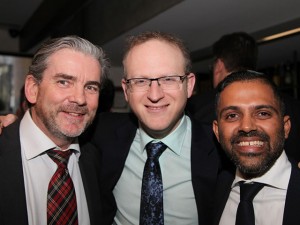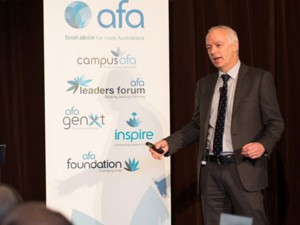It’s been five years since ClearView entered the Australian financial services market, and in that time the business has launched a retail life insurance offering, dealer group and most recently a platform service. riskinfo sat down with Managing Director, Simon Swanson, to get his perspective on how far the business has come, and what’s planned for the future…
What were you looking to bring to the Australian market with the introduction of ClearView five years ago?
The first strategic rationale behind building ClearView came from an understanding of problems within the existing market, namely that the big companies were all tied up with legacy pricing and legacy products. We wanted to build a company that was free from those issues.
The second was that we didn’t really believe that the larger companies understood strategic advice or had particularly strong relationships with advisers. I think our definition of financial planning is quite different. We’re concerned with providing true strategic financial planning; it’s about the dreams and aspirations of the client, taking stock of their current financial situation, and working with the client to develop a long-term plan that enables them to achieve those goals. The other key element of strategic advice is the monitoring of progress to that plan. It might be quarterly, half-yearly or yearly, but in those meetings the adviser checks in to see what’s changed, what’s the same, and whether the client is still on track to meet their goals.
It’s not a conversation which starts with: ‘What’s your ideal sum insured? What are your liabilities? What kind of mortgage do you have?’ It’s actually about strategies and long-term desires. Most people don’t plan to fail, they just fail to plan, and that’s really what is driving our advice offer.The advice is independent of a product. The product is incidental, and falls out of the strategic advice process, if indeed it is even needed.We also give the client flexibility to determine how they wish to pay for that advice.
The third point is that it’s very difficult to get licenses to manufacture insurance and superannuation. We were very keen not to expose ourselves to the group life market, or to pre-GFC income protection. We were also keen to avoid capital guaranteed products.
So our offer to the market is one-third product, one-third service and one-third relationships.
We set out on a program of building out a life advice product suite in 2012. At the same time our dealer group started to roll as well. In 2013 we launched into the direct space, through partnership programs and other lead generation sources, and then last year we launched our own investment platform which we will extend to the wider market this year.
Throughout this whole process we’ve been building up our people power, and recruiting the right staff who fit our culture. Now we see ourselves as an integrated life insurance, wealth management and financial advice organisation.
There is a team of people here, not just one person. We’re all in this together, and we have a very experienced team, at both the board and management level.
Where do you start when building a brand new life insurance offer?
Everyone normally talks about product development in the technical sense, but it’s actually about getting the right people and then working through the development phase collaboratively.
our offer to the market is one-third product, one-third service and one-third relationships
We’ve been very lucky in recruiting the right people to our business. I originally thought the hardest thing in this venture would be to start, because you need people. Ironically, there are a lot of people who are passionate about life insurance, wealth management and advice. And we’ve got people coming from all over the industry who want to join us. It’s been fantastic.
There is, of course, some strategic risk around that – we’re all practitioners of the industry and almost everyone here, from the call centres up to senior management, has been in the industry prior to coming here. I think we’ve also developed an interesting culture, which is attracting those quality people.
Like most new businesses we had a few hiccups along the way. At times we grew too quickly and had to slow ourselves down a bit, acknowledge the issues, reinvest in development and then move forward again.
In September 2014, ClearView announced a merger with the Matrix dealer group. What was the attraction of Matrix?
We have known the Matrix team for a long period of time. We have a similar outlook on life, superannuation and a similar view of financial planning, and that’s a very good place to start when you’re looking to merge businesses. They’re a very high quality group of people and I’m sure they could have been purchased for a lot more by others, but we thought that if we worked together on the deal, and kept it consistent with our values and existing, adviser-run models, then our goals would align.
How do you ensure you have a successful merger?
Cultural alignment is fundamental to long-term success. You can have all the numbers and all the supposed synergies in the world, but unless you’ve got the culture aligned it’s unlikely to play out well.
The second thing is to provide appropriate support for all areas of the business. We don’t look at the numbers of advisers, but rather the number of businesses in our dealer group. There’s around 100 businesses in ClearView and Matrix. We have five Practice Development Managers, eight people in technology support for our version of XPLAN, and seven highly skilled compliance people. So effectively we have three people in support roles for every 20 practices.
That kind of approach to support means you get high quality advice businesses. In the 80s, the industry clearly had issues. But one thing they got right was the amount of support. You had all the sales skills training, etc. Those things have been taken out of the industry. What we’re trying to do is put them back in, but using today’s model.
Access is also important. I speak to at least one adviser every day, without fail, to stay in touch with what advisers are dealing with, day to day, at the coal face.
Looking to the future, we’re currently going through a process of reform in the life insurance industry. What do you see as the challenges and opportunities?
I think the industry is still permeated with the vestiges of what I would call ‘tied-agency’ thinking. That leads to some of the advice issues that the industry is currently grappling with. The boutique licensees and independent advisers haven’t really had a voice in the current debate, and I think that’s an unfortunate outcome.
That said, our view of the reforms proposed in the Life Insurance Framework are as follows:
Our position on life insurance has been that mandated level commissions are not the answer. Clearly people need to be paid for giving advice. Let’s accept that. There needs to be a fair reward for doing so. We do understand that the current model needs improvement, and we’re not overly concerned with the proposed reductions to upfront commissions.
I think the industry is still permeated with the vestiges of what I would call ‘tied-agency’ thinking
What we are worried about is the clawback provisions. Clawbacks should be limited to two years, not three, and should be handled on a pro-rata basis. A three-year clawback increases the risk of contingent liability on small businesses. You don’t want anyone trading while they’re insolvent, and I’m concerned that many of the boutiques and independents do not have sufficient capital to fund a three-year clawback.
We also violently object to restrictive Approved Product Lists (APLs). In our view, all vertically integrated companies should be mandated to have 100% open APLs. There are only 11 life insurers offering advice-based products. If you can have 200 investment managers on your platforms, surely you can research 11 life insurance products and have them on your APL. I just don’t understand what the defence is for not having an open insurance APL. Some may argue it’s too complex, but believe me, we’ve had no problems doing it.
We do support the removal of volume-based bonuses, shelf-space fees and the like.
And we’re supportive of the PJC recommendations around adviser education, and believe, like all professions, the advice sector should be able to regulate itself.
But we’d like to see professionalism and education taken one step further. If it’s good enough for advisers to have a degree, surely the industry should invest in degree qualifications for underwriting and claims staff. We should all be upskilling, just as the actuarial profession did a number of decades ago. We need to have degrees in underwriting and claims available, to ensure our people are appropriately trained to manage the products as they become more complex and more technical, and as technology evolves.
How do we get the industry focused on bringing in true new business?
What people haven’t got their heads around in this whole ‘churn’ debate is that you’re actually obligated to find your clients the best product. It’s called the client’s best interest. And you should do it ethically, as well as just being compliant.
The average life of a mortgage in Australia is three or four years. Is it churn if the mortgage broker goes looking for a better deal for the client? What if moving is in the client’s best interests? Why is it different for life insurance? As long as people are getting good quality advice, it shouldn’t matter where the product goes. But the adviser should be paid for that advice. This is not a sustainability issue.
I think if we want to change the focus of the industry towards bringing in more clients, then it really has to start with behaviour. As Charlie Munger says, ‘Show me the incentive and I’ll show you the behaviour’.
12% of our business is owned by management and advisers. That makes us very different from our competitors. We’re not arguing up and down the value chain like so many of the companies in this industry do. The equity model was part of our plan from the very beginning.
All our BDMs have shares in our business. It was a conscious decision to try and change behaviour, so that they’re focused on bringing in business that is long-term, sustainable and in the client’s best interest.
The horrible thing about being a BDM in most businesses is that you start each year at zero. How good you were last year doesn’t matter one iota. You are immediately conflicted, because all you’re worrying about is next year’s bonus, so you’ll bring in whatever you can to meet those targets whatever the consequences. In addition, no-one in this company has a recruitment target for adviser numbers as that, again, may create the wrong behaviour. Our focus is purely on building a long term sustainable business.

Simon Swanson B.EC, B.Bus, ANZIIF (Fellow), CIP, FCPA is an internationally experienced financial services executive having worked for over 30 years across life insurance, funds management, general insurance and health insurance. He has successfully led the largest life insurer (CommInsure, Sovereign and Colonial) in three countries and spent half of his career in the Asia Pacific region.
Simon is effectively the founder of ClearView in its current form and was instrumental in buying Bupa Australia’s life insurance and wealth management businesses and transforming them into the integrated life insurer and wealth manager that ClearView is today.

















